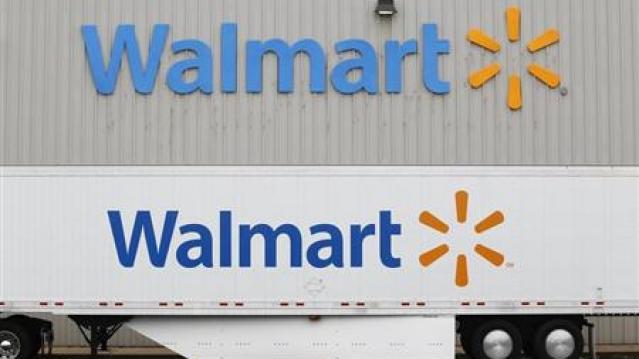Shopping Showdown: Walmart Takes On Amazon’s ‘Prime Day’

In case it wasn’t already perfectly obvious that Walmart is gunning for Amazon, the Bentonville, Ark. giant just kicked up its e-tailing competition.
Walmart announced today that it will also offer thousands of discounts for online purchases on July 15, the same day Amazon plans on hosting its Prime Day shopping extravaganza. And in its blog post announcing the sales, Walmart took a clear swipe at Amazon’s push to have shoppers subscribe to its $99 a year Prime service.
“We’ve heard some retailers are charging $100 to get access to a sale,” the Walmart blog says. “But the idea of asking customers to pay extra in order to save money just doesn’t add up for us. We’re standing up for our customers and everyone else who sees no rhyme or reason for paying a premium to save.”
Related: Amazon’s Prime Concern—A New Online Blitz by Walmart
Walmart, the world’s largest retailer, is also offering another limited-time deal to boost e-commerce sales. Starting today, customers will receive free standard shipping with online purchases that cost a minimum of $35, instead of the usual $50. The change will be effective for at least 30 days.
In February, Walmart CEO Doug McMillon told analysts on an earnings conference call that the company would invest between $1.2 billion and $1.5 billion in e-commerce throughout the year.
Neither Walmart nor Amazon has released information about specific sale offers yet, so the early hype might prove unwarranted, but the battle is clearly on and now the claws are out.
Update: Amazon responded to Walmart’s gibe with its own accusation. “We’ve heard some retailers are charging higher prices for items in their physical stores than they do for the same items online,” Greg Greeley, vice president of Amazon Prime, wrote in an email to Bloomberg. “The idea of charging your in-store customers more than your online customers doesn’t add up for us.”
Tweet of the Day: The Black Hole of Big Pharma

Billionaire John D. Arnold, a former energy trader and hedge fund manager turned philanthropist with a focus on health care, says Big Pharma appears to have a powerful hold on members of Congress.
Arnold pointed out that PhRMA, the main pharmaceutical industry lobbying group, had revenues of $459 million in 2018, and that total lobbying on behalf of the sector probably came to about $1 billion last year. “I guess $1 bil each year is an intractable force in our political system,” he concluded.
Warren’s Taxes Could Add Up to More Than 100%

The Wall Street Journal’s Richard Rubin says Elizabeth Warren’s proposed taxes could claim more than 100% of income for some wealthy investors. Here’s an example Rubin discussed Friday:
“Consider a billionaire with a $1,000 investment who earns a 6% return, or $60, received as a capital gain, dividend or interest. If all of Ms. Warren’s taxes are implemented, he could owe 58.2% of that, or $35 in federal tax. Plus, his entire investment would incur a 6% wealth tax, i.e., at least $60. The result: taxes as high as $95 on income of $60 for a combined tax rate of 158%.”
In Rubin’s back-of-the-envelope analysis, an investor worth $2 billion would need to achieve a return of more than 10% in order to see any net gain after taxes. Rubin notes that actual tax bills would likely vary considerably depending on things like location, rates of return, and as-yet-undefined policy details. But tax rates exceeding 100% would not be unusual, especially for billionaires.
Biden Proposes $1.3 Trillion Infrastructure Plan

Joe Biden on Thursday put out a $1.3 trillion infrastructure proposal. The 10-year “Plan to Invest in Middle Class Competitiveness” calls for investments to revitalize the nation’s roads, highways and bridges, speed the adoption of electric vehicles, launch a “second great railroad revolution” and make U.S. airports the best in the world.
“The infrastructure plan Joe Biden released Thursday morning is heavy on high-speed rail, transit, biking and other items that Barack Obama championed during his presidency — along with a complete lack of specifics on how he plans to pay for it all,” Politico’s Tanya Snyder wrote. Biden’s campaign site says that every cent of the $1.3 trillion would be paid for by reversing the 2017 corporate tax cuts, closing tax loopholes, cracking down on tax evasion and ending fossil-fuel subsidies.
Read more about Biden’s plan at Politico.
Number of the Day: 18 Million

There were 18 million military veterans in the United States in 2018, according to the Census Bureau. That figure includes 485,000 World War II vets, 1.3 million who served in the Korean War, 6.4 million from the Vietnam War era, 3.8 million from the first Gulf War and another 3.8 million since 9/11. We join with the rest of the country today in thanking them for their service.
Chart of the Day: Dem Candidates Face Their Own Tax Plans

Democratic presidential candidates are proposing a variety of new taxes to pay for their preferred social programs. Bloomberg’s Laura Davison and Misyrlena Egkolfopoulou took a look at how the top four candidates would fare under their own tax proposals.


